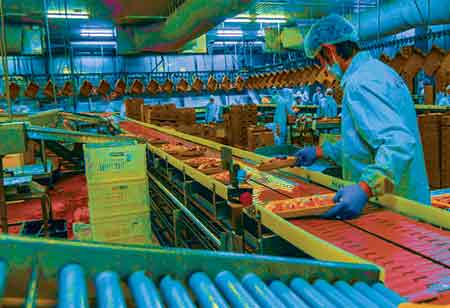Thank you for Subscribing to Food Business Review Weekly Brief
Role of IoT and AI in the Food Industry.
While innovations have been verified to be beneficial for various industries, they can also help the government

By
Food Business Review | Thursday, January 06, 2022
Stay ahead of the industry with exclusive feature stories on the top companies, expert insights and the latest news delivered straight to your inbox. Subscribe today.

Customized AI-assisted cooking helps people prepare their meals in the required portions, having a significant effect on eliminating food waste to a greater degree.
While innovations have been verified to be beneficial for various industries, they can also help the government and other stakeholders resolve the issue of food waste. IoT and Artificial Intelligence are two inventions that can be of substantial use here. Before contemplating the introduction of any rising innovations, adopters should be well aware of feasible use cases where technology can contribute. But to achieve this, there is a strict need for an in-depth understanding and awareness of how technology work and can benefit. Therefore, adopters should know how these technologies can be advantageous before adopting IoT and AI to reduce food waste.
These are two areas where IoT and AI can impact the food industry.
IoT to Reduce Food Waste
IoT will add value to the development process. Food producers may not be mindful of this, but an enormous amount of food is lost during the food processing process. As the stage of food production involves heavy-duty machinery, the risk of equipment yielding crop damage is high. Some of the other concerns include spilling, handling, and storage. The first step is to define the natural causes of food waste to solve this dilemma. And for this, it is compulsory to monitor food waste in real-time. Real-time farm data can be received by embedding several sensors and cameras in the field. Using these sensors, farmers can watch where food is wasted and take adequate steps to reduce food waste. Food waste can be restrained not only by farmers but also by government officials.
AI to Reduce Food Waste
A grocery store with various food products must be replenished whenever needed. If the stock is loaded before food products are still unsold, the chances of pest attacks are higher. Among many explanations for this is the inadequate tracking and prediction of food stocks. Instead of using manual processes, AI will make this process fast and effective. AI tools can develop exact forecasts by entering historical data about food stores, previously wasted food, and real-time shelf information. Dealers may better understand when a specific food item is out of stock. With accurate details, retailers can order only the appropriate quantity of food products.
Another regular explanation for food waste is inadequate and inefficient management of the food supply chain. Unless testing the food quality, the food is often packaged and shipped to retailers. Retailers are packing their shelves with low-quality items without knowing this problem. There is a high chance of such food being wasted. Food producers function on an AI-powered food inspection system that checks food quality before entering the consumer's hands to evade such waste. Some systems can separately track, evaluate, and determine food quality. The AI, ML, and DL components discover and perceive secret patterns that may not be apparent to the human eye. If a particular food is about to rot faster, producers will first send this stock to the distribution centers.






